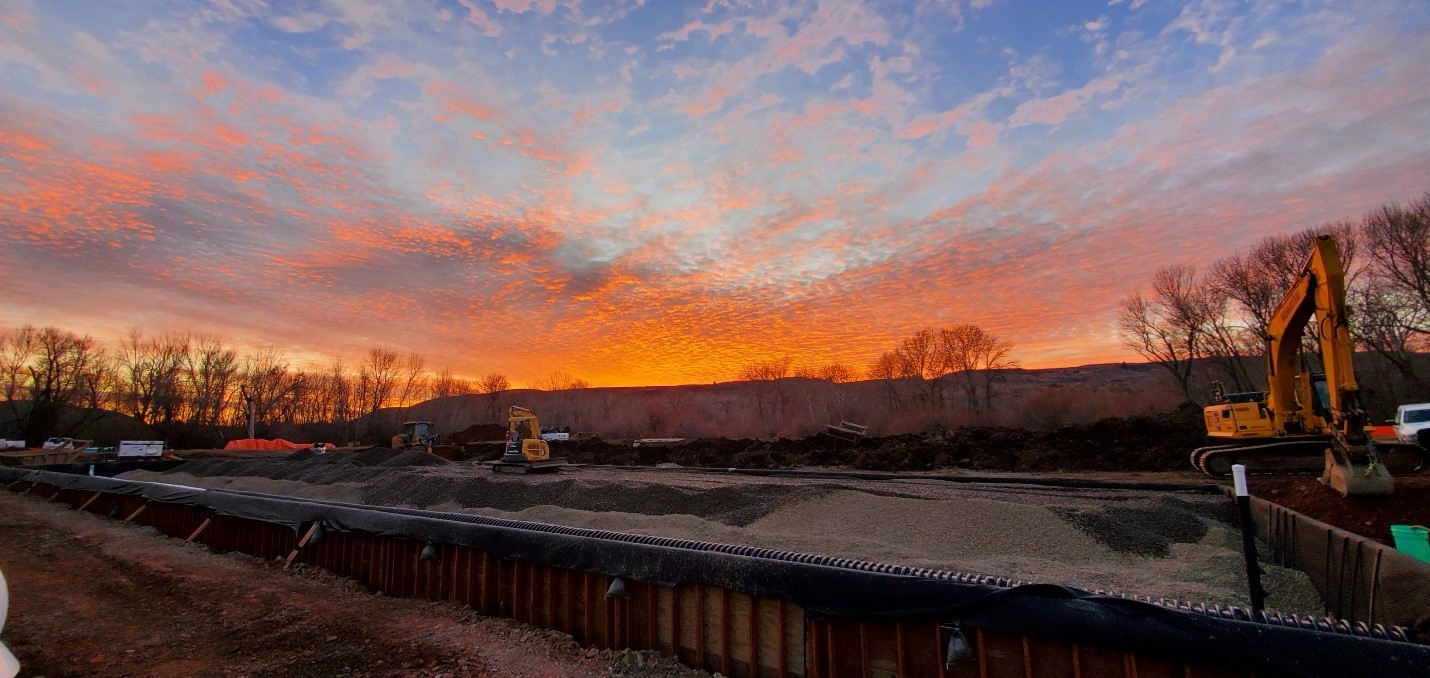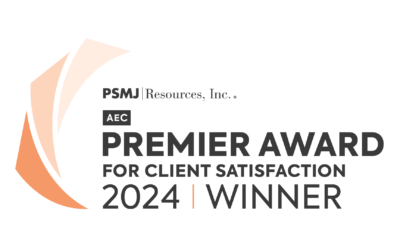The City of Council is a community located about 120 miles north of Boise, Idaho. Home to approximately 1,000 residents, the area is known for its natural beauty and small-town feel. The City manages a wastewater collection and treatment system originally constructed in the early 1980’s. Due to aging, the system has seen pipe deterioration resulting in cracks and breaks. Roots have also grown into some pipes leading to blockages and backups in homes and manholes. Holes in pipes have caused a significant amount of inflow and infiltration (I&I), which has negatively impacted the City’s wastewater treatment lagoon. To address these concerns, the City completed the replacement of almost 19,000 feet, or roughly 42% of the wastewater collection pipes, including new service connections and service lines to properties, and the replacement of over fifty manholes.
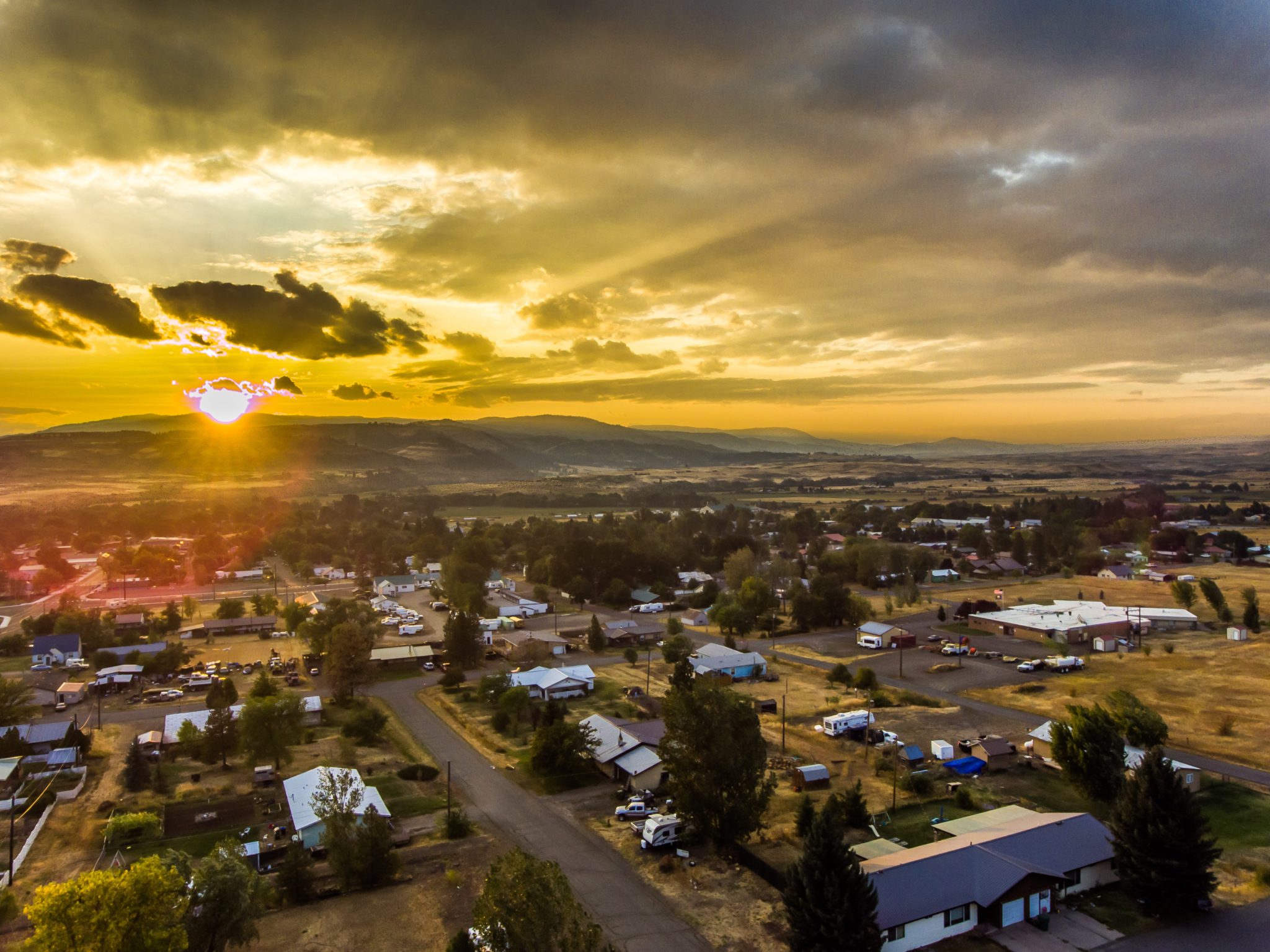
In addition to the City’s collection system improvements, the second phase of the project focused on the treatment system. Many small communities in Idaho operate discharging lagoon systems for wastewater treatment. As discharge permits get renewed, more stringent and additional limits are being put in place. Through an analysis of the City’s discharge permit, it was determined there was a reasonable potential for the future permit to include an ammonia limit. While lagoons will nitrify and produce low effluent ammonia concentrations under certain conditions, particularly in the warmer months of the year, as wintertime cools the wastewater, the ponds will cease to nitrify and ammonia removal will not be achieved. The City was very interested in finding a solution that would allow them to continue the use of lagoon technology versus upgrading to a more complex mechanical treatment plant to achieve compliance.
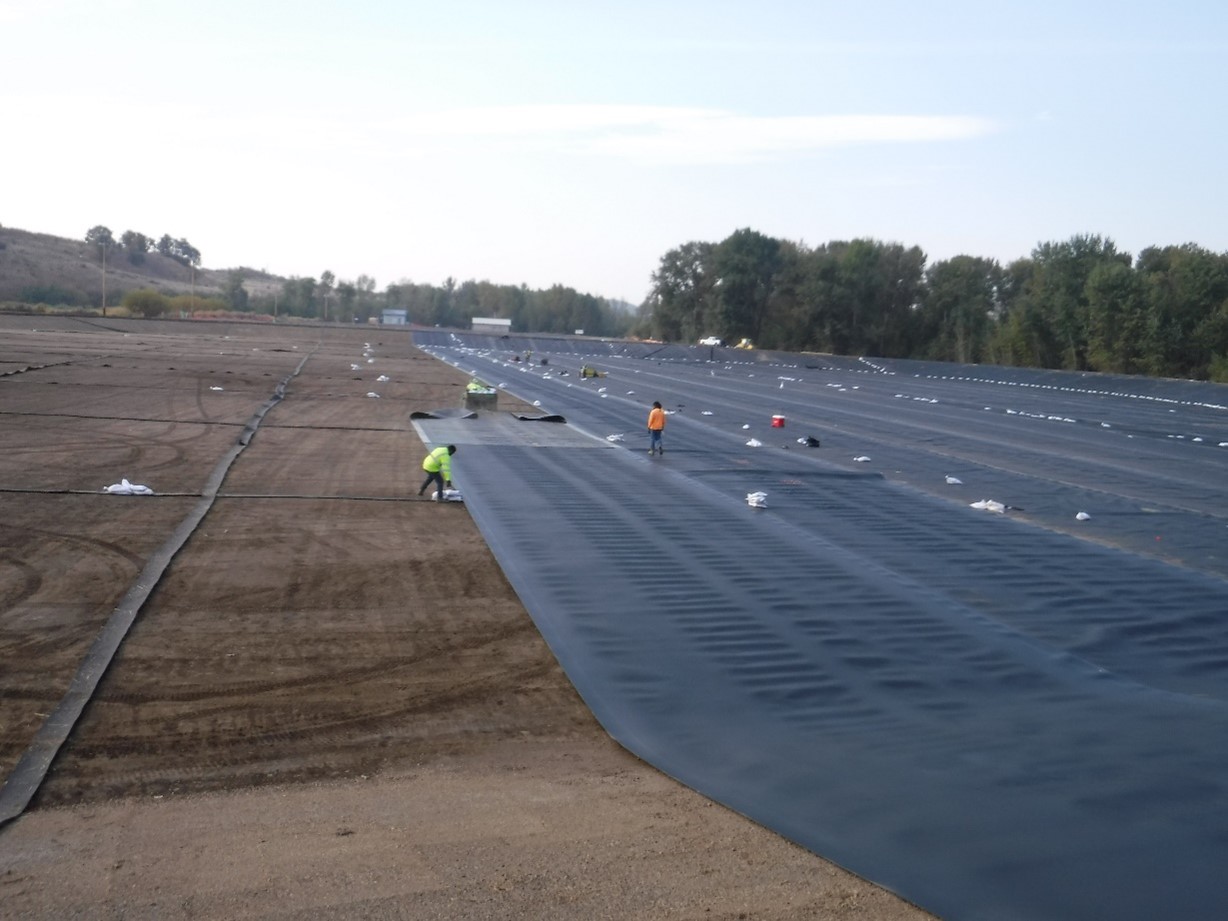
Lagoon Cell 1 Liner Installation
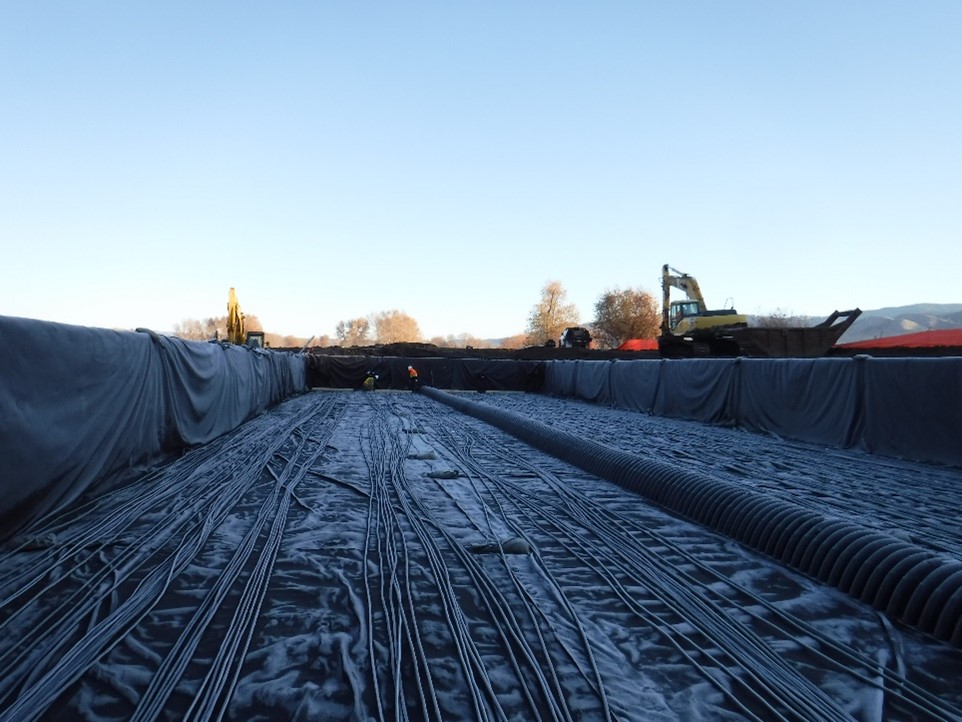
Perforated Aeration Lines on Bottom of SAGR Bed
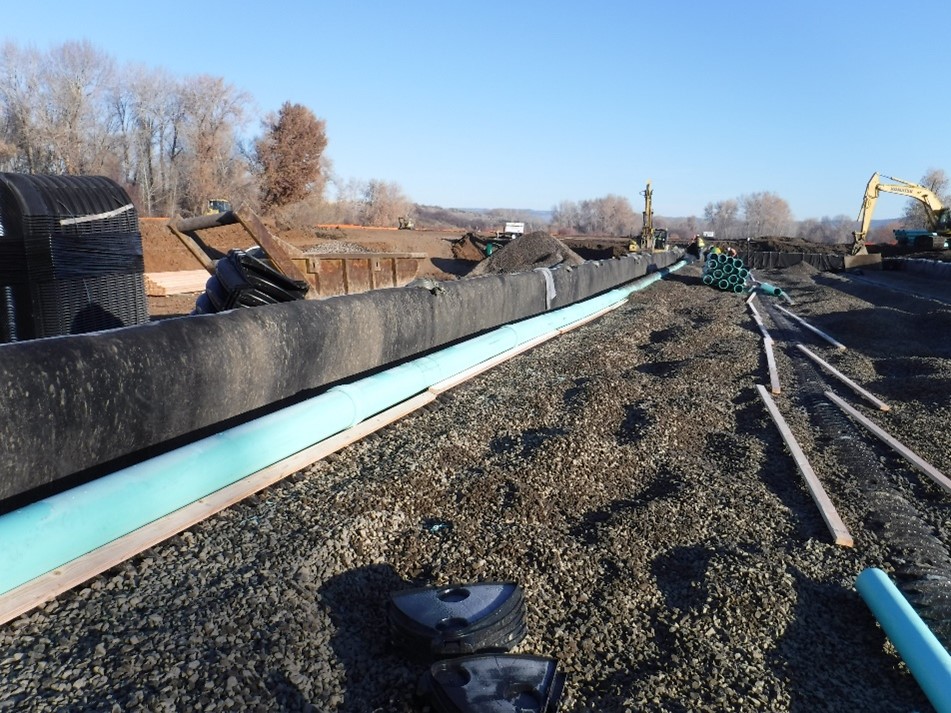
Clean Rock and Distribution Piping and Chambers
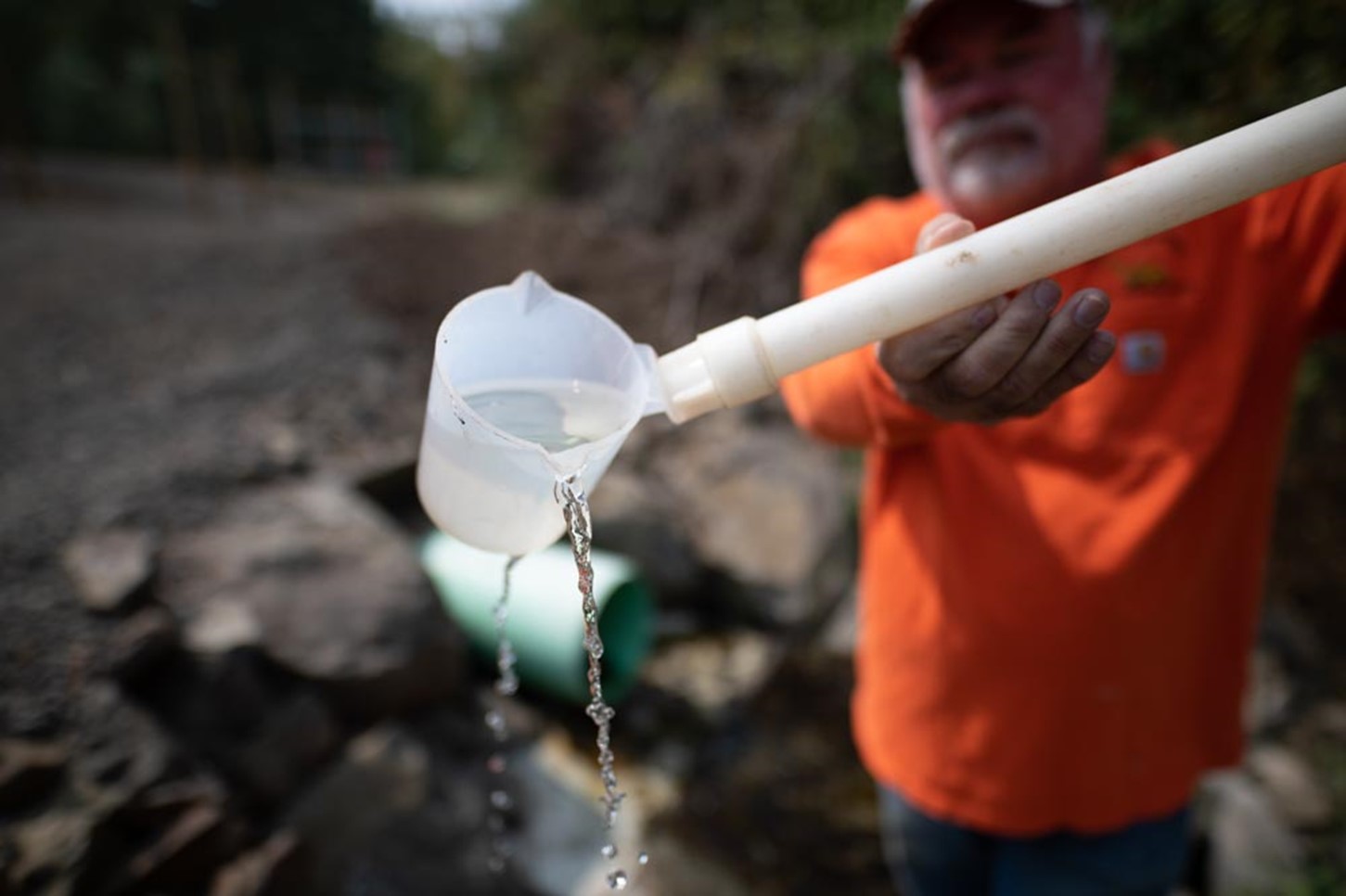
Operator Shows Treated Wastewater Effluent
Major Project Accomplishments
- Project designed and approved by DEQ in 10 months
- I&I reduction of more than 1.5 million gallons per day during spring runoff
- Collection system replaced primarily with trenchless construction methods to reduce the environmental impact
- 16,000 feet replaced by pipe bursting
- 3,000 feet replaced by open cut method
- City has not had an IPDES permit violation since the SAGR beds were put online
- $3.56 million in grants were secured for the project
- 45% grants
- $2,150,000 Idaho DEQ
- $890,000 USDA-Rural Development
- $400,000 Army Corps of Engineers
- 55% long term low-interest loan from USDA-Rural Development
- 45% grants
- First SAGR System approved by DEQ for use in Idaho
After considering a number of alternatives, the City ultimately selected a Submerged Attached Growth Reactor (SAGR) system as its preferred solution. Great West and the City worked with Nexom, the developer of the SAGR system, to design a lagoon system that would be followed by a SAGR polishing reactor with focus on ease of operation while still allowing consistent removal and low effluent levels for BOD, TSS, and Ammonia year-round.
The SAGR allows the system to overcome factors in typical lagoon systems that would otherwise prevent nitrification which include:
- When facultative lagoons freeze, atmospheric oxygen is no longer available to support the nitrifying bacteria.
- Nitrifying bacteria thrive when they have a surface to grow on, which is not abundant in a lagoon system.
- Heterotrophic bacteria consume BOD dominate nitrifying bacteria, it’s difficult for nitrification to take place before BOD levels are lowered significantly.
- In cold temperatures, the heterotroph metabolism slows, which requires more lagoon retention time for BOD removal and reduces the available retention time for nitrification to take place.
- As water temperatures drop, nitrifying bacteria have a lower metabolism and reproduction rate. New biomass does not develop quickly enough to overcome the reduced consumption of Ammonia resulting from the slower metabolism.
In order to overcome these factors, the SAGR provides an environment that promotes the growth of nitrifying bacteria. The SAGR is a fully aerated polishing reactor constructed of sacrificial wood walls lined with a synthetic liner and filled with a clean rock. Lagoon effluent flows horizontally through the bed, which is sized to provide full BOD polishing and nitrification regardless of temperature. The SAGR offers a step-feed process to prebuild and store nitrifying bacteria during months in which the water is warm, so they are in place when winter temperatures arrive. The rock in the bed provides surface area to support nitrifying bacteria growth and buffer the water temperature to avoid shocking the bacteria with cold influent.
With construction on the SAGR system completed in June of 2020, it was time to test the new treatment system. In samples taken in July through September 2021 and May through September of 2022, BOD, TSS, and Ammonia concentrations in the effluent were < 1 mg/L, < 2 mg/L, and non-detect, respectively. Results for BOD and TSS were less than 2 mg/L and Ammonia was less than 1 mg/L based on sampling completed in October- March 2021 and 2022. The influent samples were measured as high as 287 mg/L for BOD, 328 mg/L for TSS, and 28 mg/L for Ammonia, demonstrating a significant reduction in waste stream amounts for these parameters, leading to improved water quality in receiving water. Additionally, using this innovative technology, the City was able to save money in capital expenses and annual operation and maintenance costs by implementing a solution that cost less to construct and maintain than other alternatives considered.
Inadequate wastewater infrastructure in communities such as Council can become a barrier to residential and commercial growth and the discharge of poorly treated water to local ground and surface waters can adversely impact the environment. This project is a long-term solution that will promote community growth and prevent contamination of the local bodies of water now and well into the future.
To learn more about how Great West can help your community, contact us today!
LATEST NEWS
2024 Premier Award for Client Satisfaction
PSMJ Resources, Inc. has announced Great West Engineering as a winner of the 2024 Premier Award for Client Satisfaction! The Premier Award for Client Satisfaction honors architecture and engineering firms that deliver a truly exceptional client experience. The award...
2024 Employer of Choice Award
Great West Engineering has been recognized as one of the top firms in the industry, securing a place in the prestigious 2024 AEC Employer of Choice Award. This accolade, presented by PSMJ Resources, Inc., highlights the company's commitment to creating a workplace...
Summer Interns 2024
As the school year comes to an end and summer begins, we are excited to pass our knowledge and experience to the next generation of leaders in the engineering industry. One of our most cherished core values is ensuring that our employees feel empowered, and this...

